The first time I set foot in Doñana National Park, I felt stunned by how much life and color surrounded me. Sweeping wetlands and pine forests stretched out, and I caught glimpses of rare animals like the Iberian lynx. This park in southern Spain is beautiful, but honestly, it’s also incredibly fragile.
If you want to visit Doñana responsibly, you just need to take a few simple steps to enjoy its wonders without causing harm or leaving your mark.
I get it—it’s easy to let excitement take over when you explore a new place. But Doñana’s ecosystems face real threats, from water misuse to careless tourism. We have a responsibility as visitors to help protect these habitats for the creatures that live here.
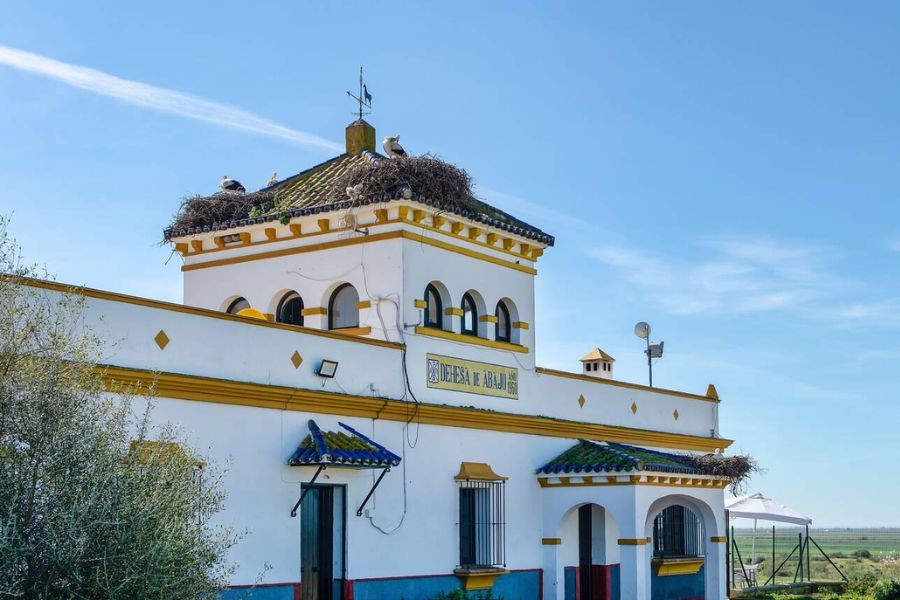
I want to share my honest tips so you (and whoever comes next) can enjoy this amazing park while respecting its delicate balance.
Understanding Doñana’s Unique Ecosystem
When I arrived in Doñana, I immediately saw how much every step mattered. The park hides a mix of fragile habitats, rare wildlife, and deep-rooted traditions. All of this makes Doñana one of Europe’s true ecological gems.
Biodiversity and Ecosystem Services
During spring, I wandered through Doñana and watched flamingos wade in the marshes. Sometimes I even caught a glimpse of the Iberian lynx. Over 300 bird species come to this park each year, using it as a vital stopover during migration.
Doñana’s ecosystem has three main habitats: marshlands on clay soil, shifting dunes, and woodlands called “cotos” on sandy ground.
These places shelter not just birds and mammals, but also rare amphibians, reptiles, and plants. Some species exist nowhere else.
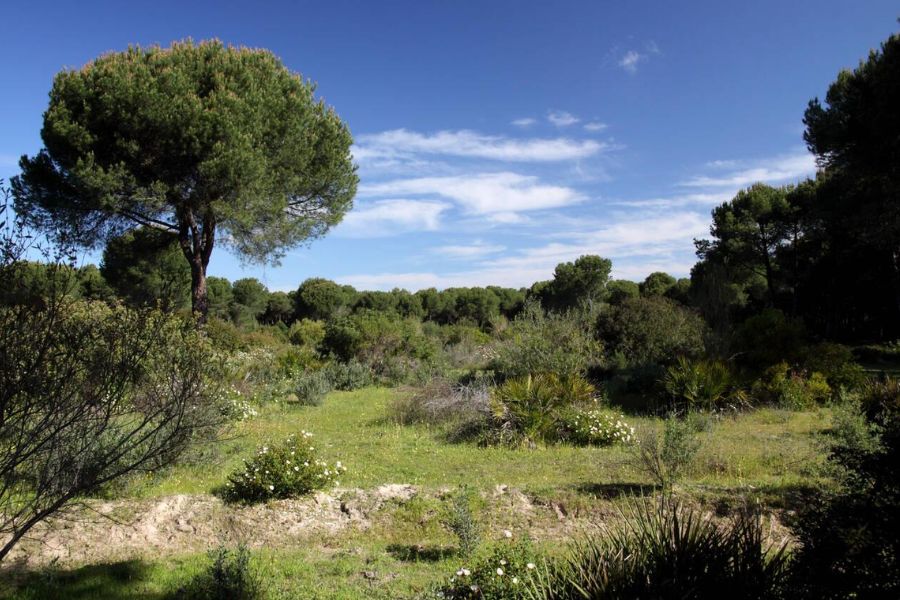
Doñana’s wetlands purify water, store floodwaters, and help reduce erosion. Local communities rely on these natural processes for clean water and fertile soil.
Ecosystem Fast Facts:
| Habitat Type | Key Species | Role |
|---|---|---|
| Marshlands | Flamingos, storks | Bird nesting, water storage |
| Dunes | Rabbits, lizards | Soil stabilization, shelter |
| Cotos | Iberian lynx, deer | Forests, biodiversity hotspot |
World Heritage and UNESCO Significance
Doñana is so much more than a simple nature reserve. At the main information center, I learned that UNESCO named Doñana a World Heritage Site. This isn’t just for the views—it’s because the park is crucial for global biodiversity.
The site protects rare and endangered wildlife, like the imperial eagle and the Iberian lynx. Thanks to UNESCO status, Doñana gets more attention, extra funding, and coordinated conservation efforts.
As a traveler, I take this recognition seriously. Even small actions—like stepping off a marked trail or dropping trash—can hurt habitats that the whole world has promised to protect.
Natural and Cultural Heritage Insights
I’ve always loved stories about people living in harmony with nature. In Doñana, that balance still exists. Traditional fishing, wild cattle herding, and centuries-old pilgrimages shape daily life here.
A local guide told me how the park weaves into Spanish cultural heritage. Every spring, the “Rocío” pilgrimage crosses the park, blending old traditions with the rhythms of the wild.
While exploring the sandy “cotos,” I noticed traces of old settlements and started to understand how tightly nature and culture connect here. Protecting Doñana means saving not just animals and plants, but a landscape rich in both natural and cultural memory.
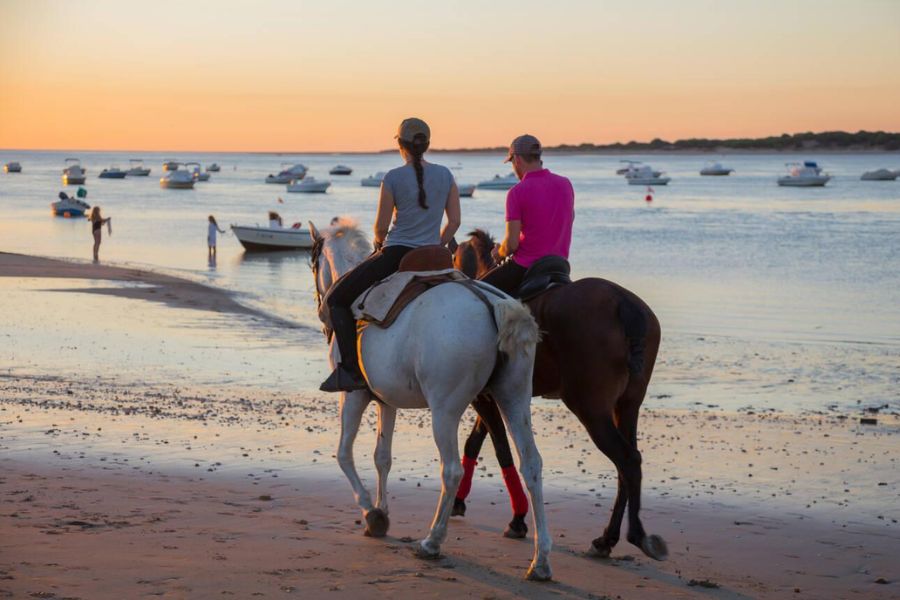
I left with a real sense that respecting both heritage and nature is the key to keeping Doñana special for the future.
Responsible Visiting: Core Principles
When I first explored Doñana, I realized my choices could affect the health of the ecosystem. Visiting with care lets me enjoy the park and helps protect its wildlife and wetlands for others.
Leave No Trace Guidelines
On my hikes, I always stick to marked trails. That way, I avoid trampling fragile plants or disturbing ground-nesting birds. Trail rules are clear, and I make sure to follow them.
Packing out my trash is a must. I never leave wrappers, bottles, or food scraps behind—even fruit peels can harm wildlife or disrupt plant growth.
I don’t pick flowers or collect souvenirs. Everything in Doñana—pine cones, feathers, you name it—belongs right where it is. When I see animals, I watch quietly from a distance and never try to feed or touch them. This helps keep creatures like the Iberian lynx or migrating birds safe and calm.
For restroom needs, I plan ahead or use facilities at visitor centers to keep water sources clean.
Here’s a quick summary:
| Action | Why It Matters |
|---|---|
| Stay on trails | Protects plants & nests |
| Pack out all trash | Prevents pollution |
| Take only photos | Preserves ecosystem balance |
| Observe from afar | Reduces stress to wildlife |
Minimizing Human Impact
Every decision I make in Doñana affects both the environment and the experience for other visitors. I walk in small groups to keep noise and trail erosion down. Big crowds scare animals and damage sensitive areas.
Water is scarce here, so I use refillable bottles and take quick showers at my accommodation. This helps during droughts and supports sustainable practices.
When I kayak or bike, I stick to designated routes. Off-trail paths can damage marshes and nesting areas for good.
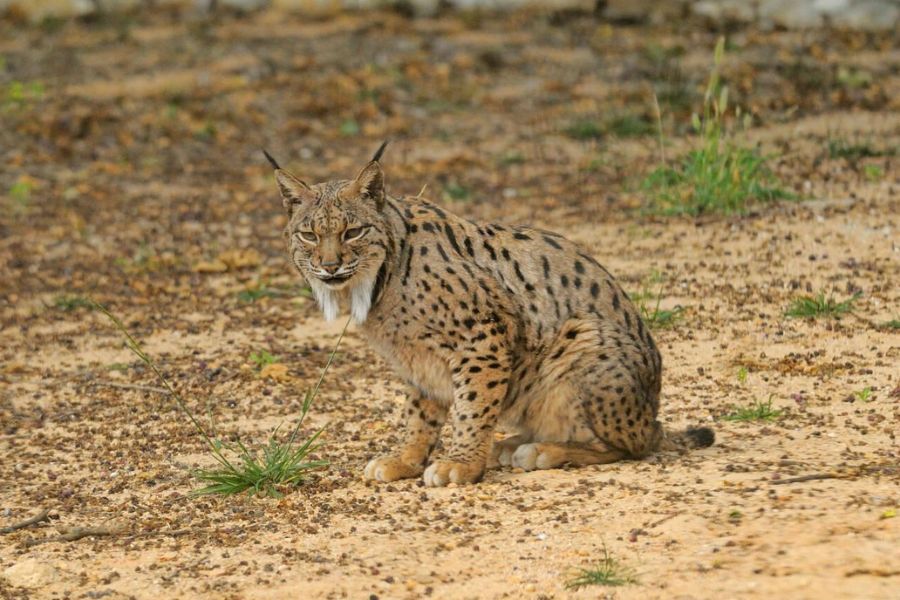
I pay attention to park advisories—like seasonal closures for bird breeding or restoration work. Rangers and signs provide advice, and I always follow it.
Sustainable Activities and Tours in Doñana
Choosing how to experience Doñana matters. Responsible travel isn’t just about where you go—it’s about how you explore and what kind of impact you leave.
Eco-Friendly Wildlife Watching
Birdwatching here is on another level. I joined a guided ecotour that focused on ethical observation. We stuck to marked trails and used binoculars to spot flamingos and eagles from a distance. The guides showed us how to move quietly so we didn’t startle animals or damage nesting areas.
What made these tours sustainable?
- Small group sizes
- Zero litter policy
- Strict viewing zones
We used apps for spotting birds without leaving the path. Early-morning marsh tours felt especially magical, with wildlife at its most active.
Guided Walks and Remote Sensing Experiences
Guided walks helped me see more and learn about conservation. Official tours cover all the main ecosystems in about four hours, and they use set routes to lower our impact.
Walking with an expert means you get great info and know you’re not harming the terrain or plants.
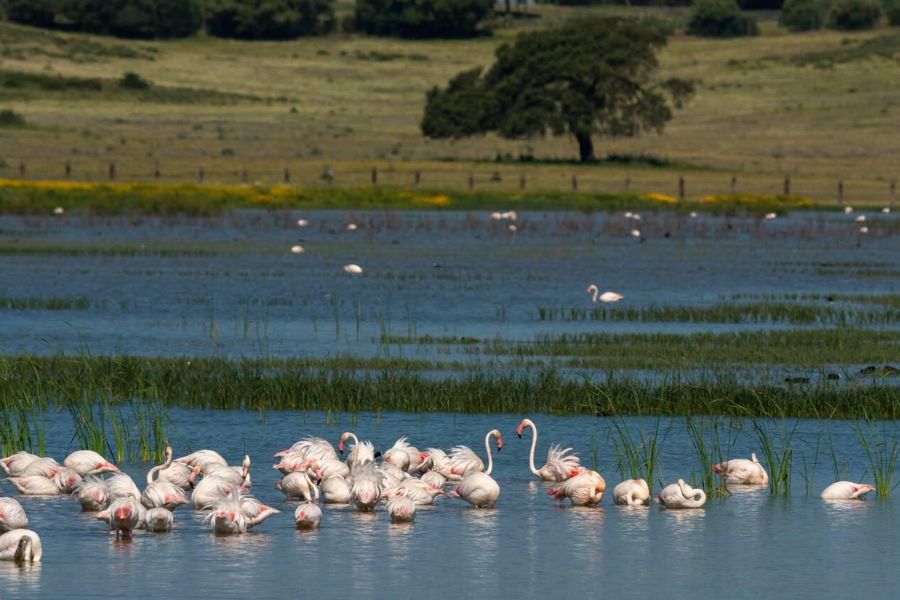
Some tours introduce remote sensing tools. Our guide brought digital devices to track animal movements from a distance. This hands-off approach let us experience the park’s secrets without getting too close.
I liked knowing my impact was minimal, even while learning a lot.
Supporting Conservation Through Tourism
Being a good visitor means supporting local businesses that help Doñana. I pick operators who partner with wildlife organizations or carry ecotourism certifications.
Many offer things like:
| Activity | Conservation Impact |
|---|---|
| Wine tasting at organic farms | Supports sustainable agriculture |
| Horseback rides | Promotes low-impact transport |
| Ranger-led marsh tours | Funds protection projects |
By choosing tours with real conservation ties, my travel money goes further. I always ask for proof of their contributions, making sure my visit supports sustainable development here.
Protecting Doñana’s Water and Climate for the Future
Doñana’s survival depends on how we manage its water and deal with climate change. This matters every day, not just for wildlife but for anyone lucky enough to visit.
Water Security and Responsible Consumption
During my stay, I saw how precious water is in Doñana. Natural wetlands support the area, but years of overuse and illegal irrigation have left water levels dangerously low.
Even simple tourist actions—like long showers or washing gear—can strain supplies.
At local lodges or campsites, I kept my showers short and skipped unnecessary laundry. Refilling my reusable water bottle at designated stations cut waste and lowered pressure on local aquifers.

I always followed any posted signs about water use, even if the request seemed minor.
Think of water here as something you share with rare wildlife. Being careful means there’s enough for migrating birds, wild horses, and future travelers.
Climate Change Impacts and Adaptation
Climate change is already reshaping Doñana. I noticed how hotter summers and unpredictable rain affect the landscape—even within a single season. Ponds full in spring might look dry by late summer.
Guided walks taught me that climate change means more droughts and less water to go around. The park is working on wetland restoration and pollution limits, but every visitor can help.
I tried to lower my carbon footprint by using public transport and joining group tours instead of driving alone. Packing light and avoiding single-use plastics also helps.
If you visit, remember—simple choices like supporting eco-friendly businesses and staying on marked trails really add up. They help Doñana adapt and keep its unique habitats alive.
Monitoring Water Quality as Visitors
On a birdwatching tour, I learned that scientists regularly test water for pollution. They check for pharmaceuticals, fertilizers, and runoff from nearby towns. These results shape conservation work and alert park managers to problems.
Visitors play a part too. By sticking to established paths and not leaving litter or soap near waterways, I help keep pollutants out of the ecosystem.
Some visitor centers invite people to join citizen science projects, like recording water clarity or spotting plant changes.
I ask staff if there are active water monitoring programs during my stay. Even just reporting unusual smells, algae, or changes in water color to rangers makes a difference. Small actions can support the scientists and keep Doñana’s water safe.
Making Informed Decisions: Support and Engagement
Choosing how to visit Doñana takes more than just booking a simple tour. The right decisions help protect this fragile place and connect your experience to bigger conservation goals.
Decision Support Tools for Visitors
When I plan a trip to Doñana, I look for clear, updated decision support tools. Maps showing sensitive habitats, online booking, and official guides help me pick low-impact routes.
I always check real-time updates on trail closures, water levels, or sensitive wildlife areas—especially during nesting or migration.
Some sites even rank routes based on how well they minimize visitor concentration in delicate zones. I use resources from Doñana Biological Station and local authorities, which often recommend quieter times or less-visited areas.
This helps me avoid crowds and keeps my presence from stressing the ecosystem.
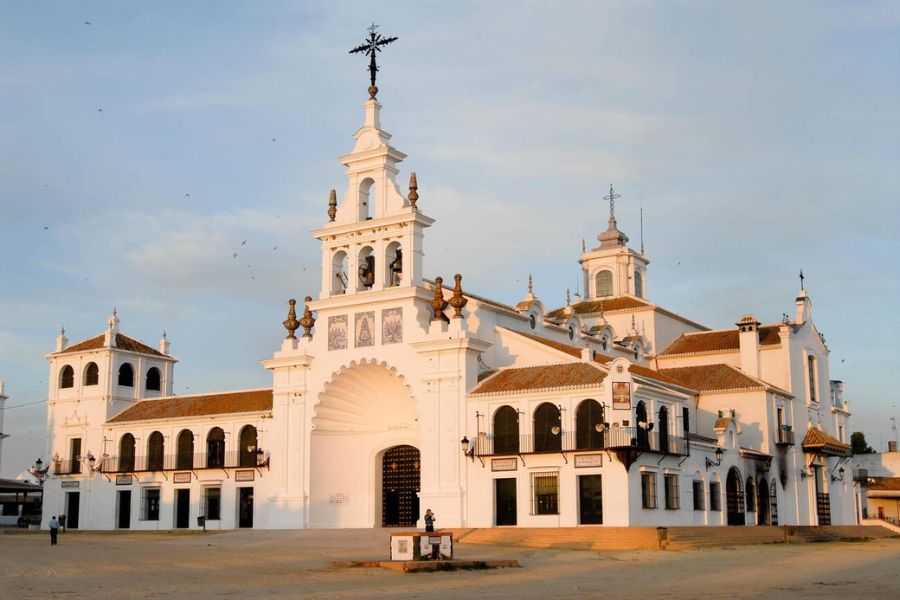
It’s smart to read recent advisories, especially since the park faces water scarcity and other challenges. Knowing which activities are off-limits or which areas are under restoration keeps me from causing harm by accident.
Participating in Conservation Initiatives
Each visit is a chance to help, sometimes in ways tourists don’t expect. I join guided tours run by local experts—many support conservation work through ticket sales.
These tours offer practical tips, like carrying out all waste and using refillable water bottles during the water crisis.
Some organizations offer volunteer days, so visitors can help with bird counts or habitat cleanups. Donating to park partners, especially those involved in water security or international efforts, is another good way to help.
I always ask if my fees or donations support specific UNESCO nominations or strategic conservation projects.
By picking accommodations or operators with eco-certifications, I know my money goes back into protecting Doñana. Leaving positive reviews and sharing verified info with friends spreads awareness and keeps these programs strong.
Understanding Global Connections
Doñana isn’t just a Spanish treasure.
Wetlands here connect to food security and migration routes that reach as far as California, Japan, or even Shanghai.
When I visit, I realize the birds I spot might spend their summers on the other side of the world.
Local actions here really do ripple out in ways I never expected.
Conservation groups from different countries team up and tackle threats together.
They highlight solutions at global congresses or share research across borders.
Learning about these connections makes me more aware of how even small choices—like picking responsible tourism—fit into bigger patterns.
When I read about scientific work from places like the Doñana Biological Station, I remember we’re all part of a huge community of stewards.
Each visit feels like more than a trip—it’s one link in a long chain of care that stretches far beyond any border.

